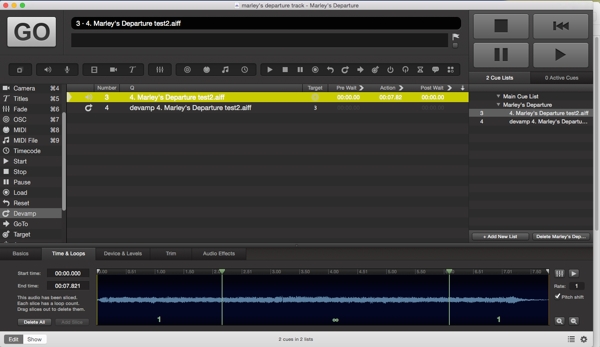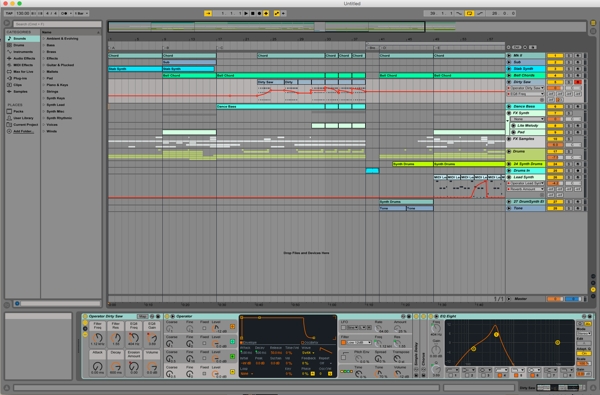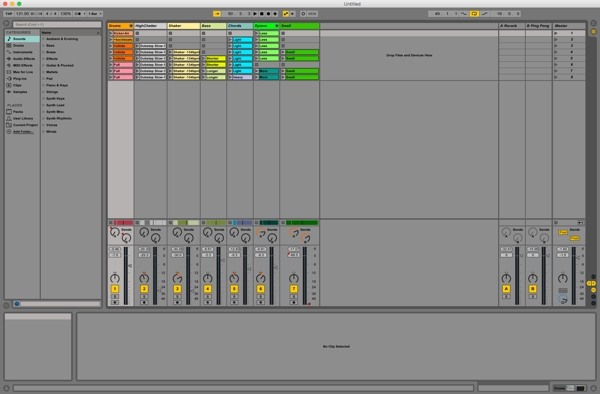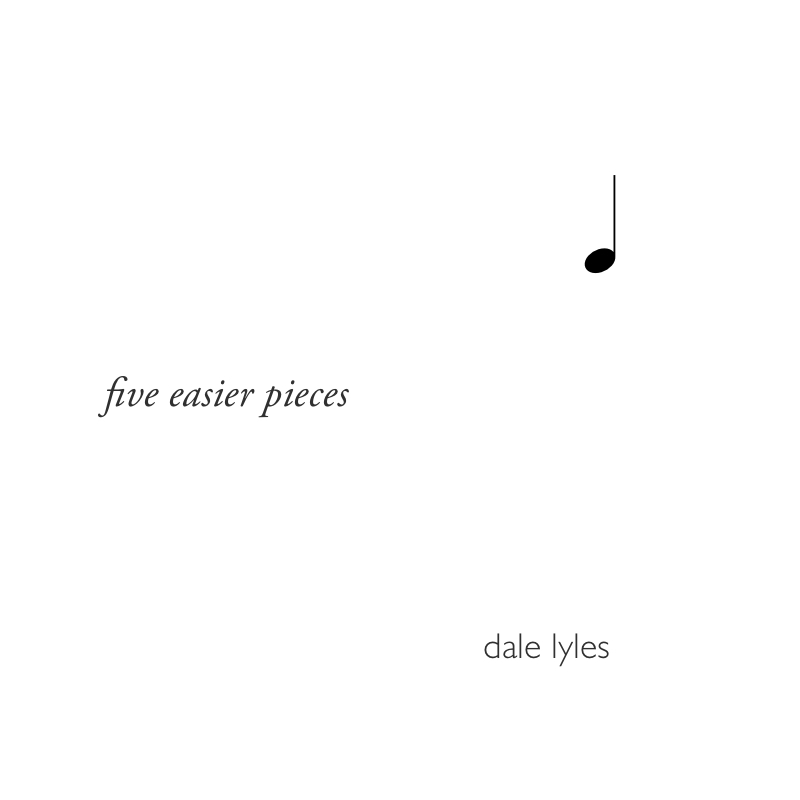I’ve been reading Daily Rituals, by Mason Currey, as my bedtime reading. It’s a very simple read: brief descriptions of the daily working habits of scores of writers, artists, and composers. They don’t seem to be in any particular order, and a great many of them were already known to me, but it is nonetheless inspirational in a belaboring-about-the-head-and-shoulders kind of way.
Ben Franklin had his daily ritual and even published it:
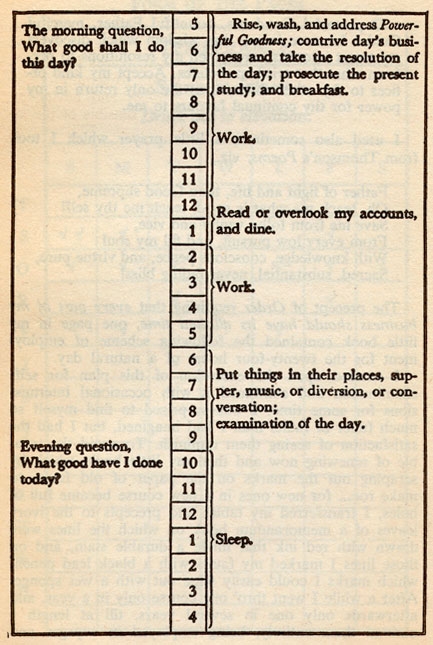
He was the first to admit that he found it difficult to follow this schedule, but that when he did it was productive.
So have I learned my lesson? Sure—over and over again.
Back when I was fully employed and working on William Blake’s Inn and the penguin opera, I composed on Sunday mornings and Wednesday/Thursday nights without fail. The iPad in the kitchen still beeps me every Sunday morning to remind me to get to work.
Since retirement, I have attempted to maintain a fuller schedule, to wit:
- 6:00 wake, exercise (walking)
- 7:00 shower, coffee
- 7:30–8:30 do the morning’s email/Facebook checks while the lovely first wife readies herself for work (i.e., don’t start working until I’m free of interruption)
- 8:30–11:30 compose, blog, research (upstairs/study work)
- 11:30–1:00 lunch, crossword, surf the web
- 1:00–4:00 read, write, correspond, run errands, household projects (downstairs/outside work)
- 4:00–5:00 cleaning, kitchen prep
- 5:00 et seq. cocktails, dinner, rehearsal, married life
Does it work? Mostly. When I really buckle down, I’m able to knock out new music, blog regularly, write books, etc. If I allow myself to be lazy, then nothing gets done. (It is worth noting, too, that I follow this schedule only on weekdays. Weekends are for debauchery fun.)
These past two weeks, for example, I have made real progress on Five Easier Pieces, writing and/or completing three of them, and yes, I’ve started the process of writing a book.
That book is Lichtenbergianism: procrastination as a creative strategy, and it’s based on a seminar on Lichtenbergianism a bunch of us gave at GHP back in 2013, a light-hearted—but quite serious—look at the creative process.
At first, I considered a series of blogposts for the Lichtenbergian website, but nothing was happening. I just wasn’t able to pull the swarm of ideas out of my head and put them into a coherent whole on the screen, topic by topic.
Then last week, as the weather turned warmer and I was able to return to the labyrinth for afternoon work, I pulled out my Lichtenbergianism field notebook and began writing in it, randomly. So far I’ve been able to write about an hour every afternoon, just jotting down phrases and ideas and examples as they come to me.
In its own way, the process is a perfect exemplar of the the Nine Precepts of Lichtenbergianism:
- Task Avoidance: this book is not one of my Lichtenbergian goals this year. I should be working on other stuff
- Waste Books: the work is being done in a waste book, in no particular order or organization other than the precepts
- Abortive Attempts: nothing I write is written in stone
- Successive Approximation: the more I write, the more organized and fleshed out it will become
- Gestalt: the more I write, the more I see what is missing
- Ritual: every afternoon, in the labyrinth if it’s nice and in the living room beside a fire if it’s not
- Steal from the Best: trust me, I will be referencing others’ findings and writings throughout
- Audience: I know who wants to read this, and I’m writing it for them
- Abandonment: not yet, but soon, I’m sure
So far so good. The book and its composition are recursive: the more I write about each precept, the more I find it applies to the writing, which I then reference: “This book was started in a waste book…”
Eventually I hope to start turning the waste book material into blog posts for my fellow Lichtenbergians for their comments. One of my gestalt visions for the book is to include sidebars and blockquotes from them about how they use the creative process in their daily work, much as we did in the original seminar.
So that’s my daily ritual. For the moment. I should really look at a fourth Easier Piece now…
